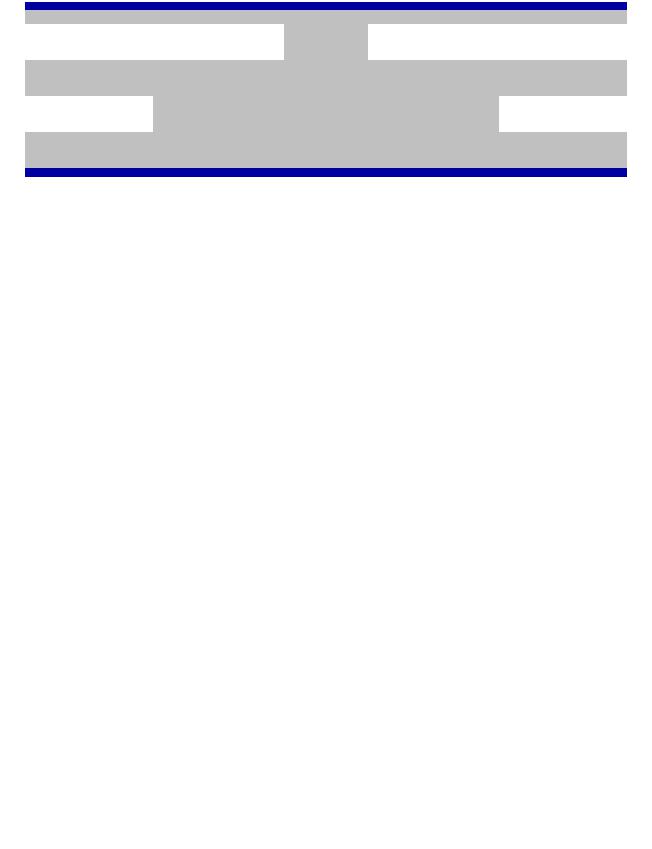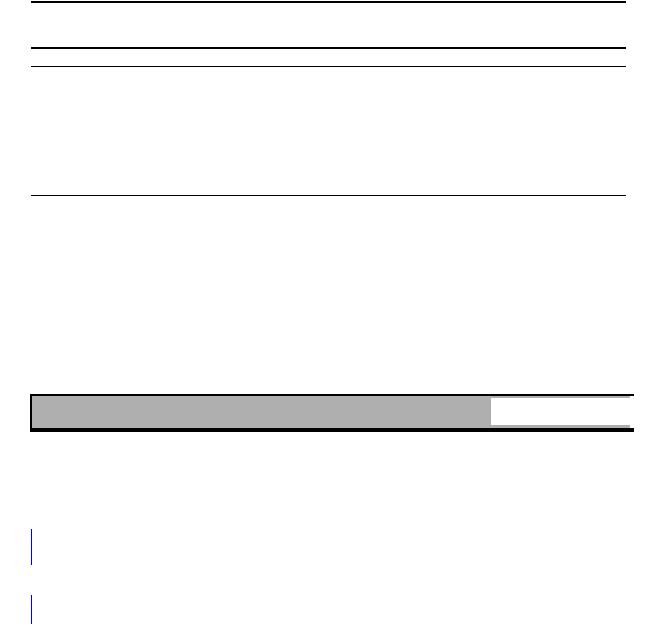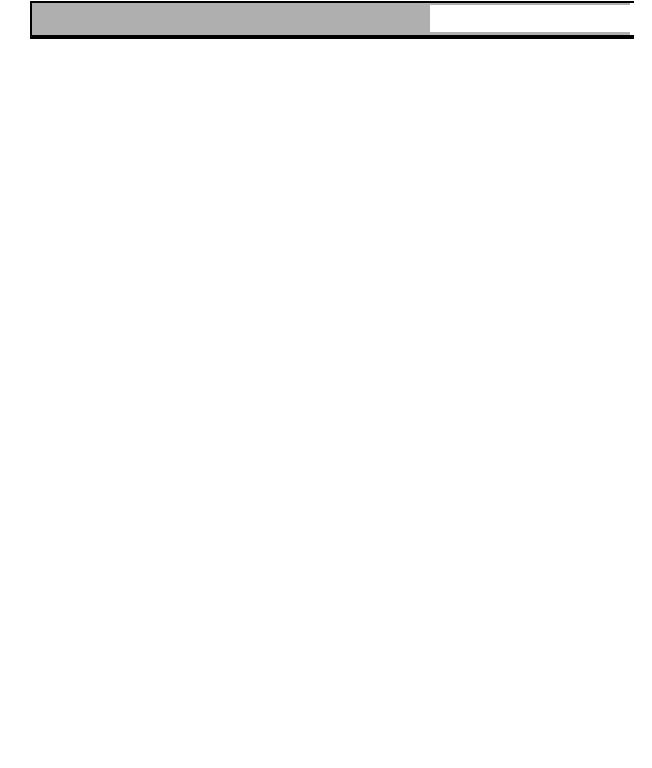
02 BOPs / NFPA 15.2007 plain text Edition
.pdf
 NFPA 15
NFPA 15
Standard for
 Water Spray Fixed Systems for Fire Protection
Water Spray Fixed Systems for Fire Protection
 2007 Edition
2007 Edition
 Copyright © 2006 National Fire Protection Association. All Rights Reserved.
Copyright © 2006 National Fire Protection Association. All Rights Reserved.

 This edition of NFPA 15, Standard for Water Spray Fixed Systems for Fire Protection, was
This edition of NFPA 15, Standard for Water Spray Fixed Systems for Fire Protection, was
prepared by the Technical Committee on Water Spray Fixed Systems. It was issued by the
 Standards Council on July 28, 2006, with an effective date of August 17, 2006, and
Standards Council on July 28, 2006, with an effective date of August 17, 2006, and supersedes all previous editions.
supersedes all previous editions.
 This edition of NFPA 15 was approved as an American National Standard on August 17,
This edition of NFPA 15 was approved as an American National Standard on August 17, 2006.
2006.
 Origin and Development of NFPA 15
Origin and Development of NFPA 15

 The Standard for Water Spray Fixed Systems for Fire Protection, formerly Water Spray
The Standard for Water Spray Fixed Systems for Fire Protection, formerly Water Spray
Nozzles and Extinguishing Systems, first prepared by the Committee on Manufacturing
 Hazards, was tentatively adopted in 1939, with final adoption in 1940. Subsequently, this
Hazards, was tentatively adopted in 1939, with final adoption in 1940. Subsequently, this
standard was placed under the jurisdiction of the Committee on Special Extinguishing
 Systems, and a new edition was adopted in 1947. In 1959 the committee organization was
Systems, and a new edition was adopted in 1947. In 1959 the committee organization was
further changed to place primary responsibility in the hands of the Committee on Water
 Spray, under the general supervision of the General Committee on Special Extinguishing
Spray, under the general supervision of the General Committee on Special Extinguishing
Methods. In 1966 the General Committee on Special Extinguishing Methods was
 discontinued, and the Committee on Water Spray was constituted as an independent
discontinued, and the Committee on Water Spray was constituted as an independent committee. Revised editions were presented in 1969, 1973, 1977, 1979, and 1982.
committee. Revised editions were presented in 1969, 1973, 1977, 1979, and 1982.
 The 1985 edition incorporated several technical changes concerning special piping
The 1985 edition incorporated several technical changes concerning special piping
provisions. The format of the document was also changed to more closely follow the NFPA
 Manual of Style.
Manual of Style.

 Given the limited changes in water spray technology over the past few years, it was apparent
Given the limited changes in water spray technology over the past few years, it was apparent that the 1985 edition could be reconfirmed with referenced publications being updated.
that the 1985 edition could be reconfirmed with referenced publications being updated.
 The 1996 edition represented a complete reorganization of the standard. Information was
The 1996 edition represented a complete reorganization of the standard. Information was rearranged in a more functional and concise format to improve the usability of the document.
rearranged in a more functional and concise format to improve the usability of the document.
 Other major changes included a new chapter on highspeed systems, and revised
Other major changes included a new chapter on highspeed systems, and revised requirements for spray nozzles, piping protection, spacing of pilot sprinklers, discharge
requirements for spray nozzles, piping protection, spacing of pilot sprinklers, discharge
Copyright NFPA
densities, and design calculations.
The 2001 edition represented a complete reorganization of the standard to conform to the requirements of the 2000 edition of the Manual of Style for NFPA Technical Committee Documents.
The 2007 edition incorporates welding requirements for pipe and fittings as well as coordinating requirements for fire department connections with NFPA 13.
Technical Committee on Water Spray Fixed Systems
Kerry M. Bell, Chair
Underwriters Laboratories Inc., IL [RT]
Robert M. Gagnon, Secretary
Gagnon Engineering, MD [SE]
Kevin F. Carrier, MiamiDade County, FL [E]
Paul A. Cera, ScheringPlough Corporation, NJ [U]
Gary A. Fadorsen, Pyrotech International Inc., OH [IM]
Russell P. Fleming, National Fire Sprinkler Association, NY [IM]
Harvey E. Goranson, HSB Professional Loss Control, TN [I]
Scott D. Henderson, Fireman’s Fund Insurance Company, MA [I]
Stephen R. Hoover, Stephen R. Hoover Associates, IL [SE]
Thomas L. Jacquel, Allstate Fire Sprinkler Inc., CT [IM]
Rep. American Fire Sprinkler Association
Robert A. Loyd, U.S. Department of the Army, IA [U]
James M. Maddry, James M. Maddry, P.E., GA [SE]
Christy J. Marsolo, Tyco International Limited, GA [M]
David A. Moore, Jr., Ohio State Fire Marshals Office, OH [E]
Thomas L. Multer, Reliable Automatic Sprinkler Company, GA [M] Rep. National Fire Sprinkler Association
Larry W. Owen, Dooley Tackaberry, Inc., TX [IM]
Gerald F. Piasecki, Jr., U.S. National Aeronautics and Space Administration, OH [U]
Copyright NFPA
Edward A. Ramirez, TVA Fire and Life Safety, Inc., MO [SE]
Lynn A. Rawls, GE Insurance Solutions, MS [I]
Rick R. Schartel, PPL Generation, LLC, PA [U]
Rep. Edison Electric Institute
James D. Soden, Shell E&P Americas, TX [U]
Rep. American Petroleum Institute
Frank J. Spitz, Jr., Spitz Fire Protection Design Company, MD [SE]
James R. Streit, U.S. Department of Energy, NM [U]
Dennis W. Taylor, Bechtel Corporation, TX [SE]
Alfred G. Vance, The Dow Chemical Company, TX [U]
Alternates
Michael J. Bosma, The Viking Corporation, MI [M] (Alt. to T. L. Multer)
George E. Laverick, Underwriters Laboratories Inc., IL [RT] (Alt. to K. M. Bell)
Kenneth W. Linder, GE Insurance Solutions, CT [I] (Alt. to L. A. Rawls)
David S. Mowrer, HSB Professional Loss Control, TN [I] (Alt. to H. E. Goranson)
James R. Myers, S&S Sprinkler Company, LLC, AL [IM] (Alt. to T. L. Jacquel)
Arkady Okun, ConEdison of New York, Inc., NY [U] (Alt. to R. R. Schartel)
Robert V. Scholes, Fireman's Fund Insurance Company, CA [I] (Alt. to S. D. Henderson)
Victoria B. Valentine, National Fire Sprinkler Association, NY [IM] (Alt. to R. P. Fleming)
Terry L. Victor, Tyco/SimplexGrinnell, MD [M] (Alt. to C. J. Marsolo)
Copyright NFPA

David R. Hague, NFPA Staff Liaison
This list represents the membership at the time the Committee was balloted on the final text of this edition. Since that time, changes in the membership may have occurred. A key to classifications is found at the back of the document.
NOTE: Membership on a committee shall not in and of itself constitute an endorsement of the Association or any document developed by the committee on which the member serves.
Committee Scope: This Committee shall have primary responsibility for documents on the design, construction, installation, and test of fixed water spray systems for fire protection purposes.
NFPA 15 Standard for
Water Spray Fixed Systems for Fire Protection 2007 Edition
IMPORTANT NOTE: This NFPA document is made available for use subject to important notices and legal disclaimers. These notices and disclaimers appear in all publications containing this document and may be found under the heading “Important Notices and Disclaimers Concerning NFPA Documents.” They can also be obtained on request from NFPA or viewed at www.nfpa.org/disclaimers.
NOTICE: An asterisk (*) following the number or letter designating a paragraph indicates that explanatory material on the paragraph can be found in Annex A.
Changes other than editorial are indicated by a vertical rule beside the paragraph, table, or figure in which the change occurred. These rules are included as an aid to the user in identifying changes from the previous edition. Where one or more complete paragraphs have been deleted, the deletion is indicated by a bullet (•) between the paragraphs that remain.
A reference in brackets [ ] following a section or paragraph indicates material that has been extracted from another NFPA document. As an aid to the user, the complete title and edition of the source documents for extracts in mandatory sections of the document are given in Chapter 2 and those for extracts in informational sections are given in Annex C. Editorial changes to extracted material consist of revising references to an appropriate division in this document or the inclusion of the document number with the division number when the reference is to the original document. Requests for interpretations or revisions of extracted text shall be sent to the technical committee responsible for the source document.
Information on referenced publications can be found in Chapter 2 and Annex C.
Chapter 1 Administration

 1.1 Scope.
1.1 Scope.

 1.1.1 This standard provides the minimum requirements for the design, installation, and
1.1.1 This standard provides the minimum requirements for the design, installation, and system acceptance testing of water spray fixed systems for fire protection service and the
system acceptance testing of water spray fixed systems for fire protection service and the
Copyright NFPA
minimum requirements for the periodic testing and maintenance of ultra highspeed water spray fixed systems.
1.1.2* Water spray fixed systems shall be specifically designed to provide for effective fire control, extinguishment, prevention, or exposure protection.
1.1.3* This standard shall not apply to water spray protection from portable nozzles, sprinkler systems, monitor nozzles, water mist suppression systems, explosion suppression, or other means of application covered by other standards of NFPA.
1.2 Purpose.
The purpose of this standard shall be to provide the minimum requirements for water spray fixed systems based upon sound engineering principles, test data, and field experience.
1.3 Application.
1.3.1Water spray is applicable for protection of specific hazards and equipment and shall be permitted to be installed independently of, or supplementary to, other forms of fire protection systems or equipment.
1.3.2Water spray protection is acceptable for the protection of hazards involving each of the following groups:
(1)Gaseous and liquid flammable materials
(2)Electrical hazards such as transformers, oil switches, motors, cable trays, and cable runs
(3)Ordinary combustibles such as paper, wood, and textiles
(4)Certain hazardous solids such as propellants and pyrotechnics
1.4 Retroactivity.
The provisions of this standard reflect a consensus of what is necessary to provide an acceptable degree of protection from the hazards addressed in this standard at the time the standard was issued.
1.4.1Unless otherwise specified, the provisions of this standard shall not apply to facilities, equipment, structures, or installations that existed or were approved for construction or installation prior to the effective date of the standard. Where specified, the provisions of this standard shall be retroactive.
1.4.2In those cases where the authority having jurisdiction determines that the existing situation presents an unacceptable degree of risk, the authority having jurisdiction shall be permitted to apply retroactively any portions of this standard deemed appropriate.
1.4.3The retroactive requirements of this standard shall be permitted to be modified if their application clearly would be impractical in the judgment of the authority having jurisdiction, and only where it is clearly evident that a reasonable degree of safety is provided.
Copyright NFPA

1.5 Equivalency.
Nothing in this standard is intended to prevent the use of systems, methods, or devices of equivalent or superior quality, strength, fire resistance, effectiveness, durability, and safety over those prescribed by this standard. Technical documentation shall be submitted to the authority having jurisdiction to demonstrate equivalency. The system, method, or device shall be approved for the intended purpose by the authority having jurisdiction.
1.6 Units and Formulas.
1.6.1 Metric units of measurement in this standard are in accordance with the modernized metric system known as the International System of Units (SI). Two units (liter and bar), outside of but recognized by SI, are commonly used in international fire protection. These units are listed in Table 1.6.1, with conversion factors.
Table 1.6.1 Unit Conversions
Name of Unit |
Unit Symbol |
Conversion Factor |
Liter |
L |
1 gal = 3.785 L |
Liter per minute per square meter |
(L/min)/m2 |
1 gpm/ft2 = 40.746 |
|
|
(L/min)/m2 |
Cubic decimeter |
dm3 |
1 gal = 3.785 dm3 |
Pascal |
Pa |
1 psi = 6894.757 Pa |
Bar |
bar |
1 psi = 0.0689 bar |
Bar |
bar |
1 bar = 105 Pa |
Note: For additional conversions and information see IEEE/ASTMSI10, Standard Practice for Use of the International System of Units (SI): The Modern Metric System.
1.6.2If a value for measurement as given in this standard is followed by an equivalent value in another unit, the first stated shall be regarded as the requirement. A given equivalent value might be approximate.
1.6.3The conversion procedure for the SI units has been to multiply the quantity by the conversion factor and then to round the result to the appropriate number of significant digits.
Chapter 2 Referenced Publications

 2.1 General.
2.1 General.

 The documents or portions thereof listed in this chapter are referenced within this standard
The documents or portions thereof listed in this chapter are referenced within this standard and shall be considered part of the requirements of this document.
and shall be considered part of the requirements of this document.
 2.2 NFPA Publications.
2.2 NFPA Publications.
 National Fire Protection Association, 1 Batterymarch Park, Quincy, MA 021697471.
National Fire Protection Association, 1 Batterymarch Park, Quincy, MA 021697471.

 NFPA 13, Standard for the Installation of Sprinkler Systems, 2007 edition.
NFPA 13, Standard for the Installation of Sprinkler Systems, 2007 edition.
Copyright NFPA

 NFPA 20, Standard for the Installation of Stationary Pumps for Fire Protection, 2007
NFPA 20, Standard for the Installation of Stationary Pumps for Fire Protection, 2007
edition.
 NFPA 22, Standard for Water Tanks for Private Fire Protection, 2003 edition.
NFPA 22, Standard for Water Tanks for Private Fire Protection, 2003 edition.

 NFPA 24, Standard for the Installation of Private Fire Service Mains and Their
NFPA 24, Standard for the Installation of Private Fire Service Mains and Their
Appurtenances, 2007 edition.
 NFPA 25, Standard for the Inspection, Testing, and Maintenance of WaterBased Fire
NFPA 25, Standard for the Inspection, Testing, and Maintenance of WaterBased Fire
Protection Systems, 2002 edition.
 NFPA 51B, Standard for Fire Prevention During Welding, Cutting, and Other Hot Work,
NFPA 51B, Standard for Fire Prevention During Welding, Cutting, and Other Hot Work,
2003 edition.
 NFPA 70, National Electrical Code®, 2005 edition.
NFPA 70, National Electrical Code®, 2005 edition.

 NFPA 72®, National Fire Alarm Code®, 2007 edition.
NFPA 72®, National Fire Alarm Code®, 2007 edition.
 NFPA 1963, Standard for Fire Hose Connections, 2003 edition.
NFPA 1963, Standard for Fire Hose Connections, 2003 edition.

 2.3 Other Publications.
2.3 Other Publications.
 2.3.1 ANSI Publications.
2.3.1 ANSI Publications.

 American National Standards Institute, Inc., 25 West 43rd Street, 4th Floor, New York, NY
American National Standards Institute, Inc., 25 West 43rd Street, 4th Floor, New York, NY
10036.
 ANSI/ASME B1.20.1, Pipe Threads, General Purpose, 1983.
ANSI/ASME B1.20.1, Pipe Threads, General Purpose, 1983.

 ANSI B16.1, Cast Iron Pipe Flanges and Flanged Fittings, 1998.
ANSI B16.1, Cast Iron Pipe Flanges and Flanged Fittings, 1998.
 ANSI B16.3, Malleable Iron Threaded Fittings, 1998.
ANSI B16.3, Malleable Iron Threaded Fittings, 1998.

 ANSI B16.4, Gray Iron Threaded Fittings, 1998.
ANSI B16.4, Gray Iron Threaded Fittings, 1998.
 ANSI B16.5, Pipe Flanges and Flanged Fittings, 2003.
ANSI B16.5, Pipe Flanges and Flanged Fittings, 2003.

 ANSI B16.9, FactoryMade Wrought Steel Buttwelding Fittings, 2003.
ANSI B16.9, FactoryMade Wrought Steel Buttwelding Fittings, 2003.
 ANSI B16.11, Forged Fittings, SocketWelding and Threaded, 2001.
ANSI B16.11, Forged Fittings, SocketWelding and Threaded, 2001.

 ANSI B16.18, Cast Copper Alloy Solder Joint Pressure Fittings, 2001.
ANSI B16.18, Cast Copper Alloy Solder Joint Pressure Fittings, 2001.
 ANSI B16.22, Wrought Copper and Copper Alloy Solder Joint Pressure Fittings, 2001.
ANSI B16.22, Wrought Copper and Copper Alloy Solder Joint Pressure Fittings, 2001.

 ANSI B16.25, Buttwelding Ends, 1997.
ANSI B16.25, Buttwelding Ends, 1997.
 ANSI B36.10M, Welded and Seamless Wrought Steel Pipe, 2000.
ANSI B36.10M, Welded and Seamless Wrought Steel Pipe, 2000.

 ANSI B36.19M, Stainless Steel Pipe, 1985.
ANSI B36.19M, Stainless Steel Pipe, 1985.
 ANSI C2, National Electrical Safety Code, 2002.
ANSI C2, National Electrical Safety Code, 2002.

 2.3.2 ASME Publication.
2.3.2 ASME Publication.
 American Society of Mechanical Engineers, Three Park Avenue, New York, NY
American Society of Mechanical Engineers, Three Park Avenue, New York, NY 100165990.
100165990.
Copyright NFPA

 ASME Section IX, Welding and Brazing Qualifications, 2003.
ASME Section IX, Welding and Brazing Qualifications, 2003.
 2.3.3 ASTM Publications.
2.3.3 ASTM Publications.
 ASTM International, 100 Barr Harbor Drive, Box C700, West Conshohocken, PA
ASTM International, 100 Barr Harbor Drive, Box C700, West Conshohocken, PA 194282959.
194282959.
 ASTM A 53, Standard Specification for Pipe, Steel, Black and HotDipped, ZincCoated,
ASTM A 53, Standard Specification for Pipe, Steel, Black and HotDipped, ZincCoated, Welded and Seamless, 2004.
Welded and Seamless, 2004.
 ASTM A 135, Standard Specification for ElectricResistanceWelded Steel Pipe, 2001.
ASTM A 135, Standard Specification for ElectricResistanceWelded Steel Pipe, 2001.

 ASTM A 182, Standard Specification for Forged or Rolled AlloySteel Pipe Flanges,
ASTM A 182, Standard Specification for Forged or Rolled AlloySteel Pipe Flanges, Forged Fittings, and Valves and Parts for HighTemperature Service, 2004.
Forged Fittings, and Valves and Parts for HighTemperature Service, 2004.
 ASTM A 234, Standard Specification for Piping Fittings of Wrought Carbon Steel and
ASTM A 234, Standard Specification for Piping Fittings of Wrought Carbon Steel and Alloy Steel for Moderate and High Temperature Service, 2004.
Alloy Steel for Moderate and High Temperature Service, 2004.
 ASTM A 312, Standard Specification for Seamless Welded and Heavily Cold Worked
ASTM A 312, Standard Specification for Seamless Welded and Heavily Cold Worked Austenitic Stainless Steel Pipes, 2004.
Austenitic Stainless Steel Pipes, 2004.
 ASTM A 536, Standard Specification for Ductile Iron Castings, 1984.
ASTM A 536, Standard Specification for Ductile Iron Castings, 1984.

 ASTM A 795, Standard Specification for Black and HotDipped ZincCoated (Galvanized)
ASTM A 795, Standard Specification for Black and HotDipped ZincCoated (Galvanized) Welded and Seamless Steel Pipe for Fire Protection Use, 2004.
Welded and Seamless Steel Pipe for Fire Protection Use, 2004.
 ASTM B 75, Standard Specification for Seamless Copper Tube, 2002.
ASTM B 75, Standard Specification for Seamless Copper Tube, 2002.

 ASTM B 88, Standard Specification for Seamless Copper Water Tube, 2003.
ASTM B 88, Standard Specification for Seamless Copper Water Tube, 2003.
 ASTM B 251, Standard Specification for General Requirements for Wrought Seamless
ASTM B 251, Standard Specification for General Requirements for Wrought Seamless Copper and CopperAlloy Tube, 2002.
Copper and CopperAlloy Tube, 2002.
 2.3.4 AWS Publications.
2.3.4 AWS Publications.

 American Welding Society, 550 N. W. LeJeune Road, Miami, FL 33126.
American Welding Society, 550 N. W. LeJeune Road, Miami, FL 33126.
 AWS A5.8, Specification for Filler Metals for Brazing and Braze Welding, 2004.
AWS A5.8, Specification for Filler Metals for Brazing and Braze Welding, 2004.

 AWS B2.1, Specification for Welding Procedures and Performance Qualification, 2005.
AWS B2.1, Specification for Welding Procedures and Performance Qualification, 2005.
 AWS B2.2, Standard for Brazing Procedure and Performance Qualification, 1991.
AWS B2.2, Standard for Brazing Procedure and Performance Qualification, 1991.

 2.3.5 IEEE Publication.
2.3.5 IEEE Publication.

 Institute of Electrical and Electronics Engineers, Three Park Avenue, 17th Floor, New York,
Institute of Electrical and Electronics Engineers, Three Park Avenue, 17th Floor, New York, NY 100165997.
NY 100165997.
 IEEE/ASTMSI10, Standard Practice for Use of the International System of Units (SI):
IEEE/ASTMSI10, Standard Practice for Use of the International System of Units (SI): The Modern Metric System, 2002.
The Modern Metric System, 2002.
 2.3.6 Other Publications.
2.3.6 Other Publications.

 MerriamWebster’s Collegiate Dictionary, 11th edition, MerriamWebster, Inc., Springfield,
MerriamWebster’s Collegiate Dictionary, 11th edition, MerriamWebster, Inc., Springfield, MA, 2003.
MA, 2003.
Copyright NFPA

2.4 References for Extracts in Mandatory Sections.
NFPA 13, Standard for the Installation of Sprinkler Systems, 2007 edition.
NFPA 25, Standard for the Inspection, Testing, and Maintenance of WaterBased Fire Protection Systems, 2002 edition.
Chapter 3 Definitions

 3.1 General.
3.1 General.

 The definitions contained in this chapter shall apply to the terms used in this standard. Where
The definitions contained in this chapter shall apply to the terms used in this standard. Where
terms are not defined in this chapter or within another chapter, they shall be defined using
 their ordinarily accepted meanings within the context in which they are used.
their ordinarily accepted meanings within the context in which they are used.
 MerriamWebster’s Collegiate Dictionary, 11th edition, shall be the source for the ordinarily
MerriamWebster’s Collegiate Dictionary, 11th edition, shall be the source for the ordinarily
 accepted meaning.
accepted meaning.

 3.2 NFPA Official Definitions.
3.2 NFPA Official Definitions.

 3.2.1*
3.2.1* Approved. Acceptable to the authority having jurisdiction.
Approved. Acceptable to the authority having jurisdiction.

 3.2.2*
3.2.2* Authority Having Jurisdiction (AHJ). An organization, office, or individual
Authority Having Jurisdiction (AHJ). An organization, office, or individual
responsible for enforcing the requirements of a code or standard, or for approving
 equipment, materials, an installation, or a procedure.
equipment, materials, an installation, or a procedure.

 3.2.3*
3.2.3* Listed. Equipment, materials, or services included in a list published by an
Listed. Equipment, materials, or services included in a list published by an
organization that is acceptable to the authority having jurisdiction and concerned with
 evaluation of products or services, that maintains periodic inspection of production of listed
evaluation of products or services, that maintains periodic inspection of production of listed
equipment or materials or periodic evaluation of services, and whose listing states that either
 the equipment, material, or service meets appropriate designated standards or has been tested
the equipment, material, or service meets appropriate designated standards or has been tested and found suitable for a specified purpose.
and found suitable for a specified purpose.
 3.2.4 Shall. Indicates a mandatory requirement.
3.2.4 Shall. Indicates a mandatory requirement.

 3.2.5 Should. Indicates a recommendation or that which is advised but not required.
3.2.5 Should. Indicates a recommendation or that which is advised but not required.

 3.3 General Definitions.
3.3 General Definitions.

 3.3.1 Combined System. A system of piping that connects both sprinklers and water spray
3.3.1 Combined System. A system of piping that connects both sprinklers and water spray nozzles in a common fire area, and is supplied by a single riser and system actuation valve.
nozzles in a common fire area, and is supplied by a single riser and system actuation valve.
 3.3.2 Control of Burning. Application of water spray to equipment or areas where a fire
3.3.2 Control of Burning. Application of water spray to equipment or areas where a fire
can occur to control the rate of burning and thereby limit the heat release from a fire until the
 fuel can be eliminated or extinguishment effected.
fuel can be eliminated or extinguishment effected.

 3.3.3 Deflagration. Propagation of a combustion zone at a velocity that is less than the
3.3.3 Deflagration. Propagation of a combustion zone at a velocity that is less than the speed of sound in the unreacted medium.
speed of sound in the unreacted medium.
 3.3.4 Density. The unit rate of water application to an area or surface expressed in gpm/ft2
3.3.4 Density. The unit rate of water application to an area or surface expressed in gpm/ft2 [(L/min)/m2].
[(L/min)/m2].
Copyright NFPA

3.3.5 Detection Equipment.
 3.3.5.1 Automatic Detection Equipment. Equipment that automatically detects heat, flame,
3.3.5.1 Automatic Detection Equipment. Equipment that automatically detects heat, flame,
products of combustion, flammable gases, or other conditions likely to produce fire or
 explosion and cause other automatic actuation of alarm and protection equipment. [25,
explosion and cause other automatic actuation of alarm and protection equipment. [25, 2002]
2002]
 3.3.5.2 Flammable Gas Detection Equipment. Equipment that will automatically detect a
3.3.5.2 Flammable Gas Detection Equipment. Equipment that will automatically detect a percent volume concentration of a flammable gas or vapor relative to a predetermined level.
percent volume concentration of a flammable gas or vapor relative to a predetermined level.
 3.3.6 Detonation. Propagation of a combustion zone at a velocity that is greater than the
3.3.6 Detonation. Propagation of a combustion zone at a velocity that is greater than the speed of sound in the unreacted medium.
speed of sound in the unreacted medium.
 3.3.7 Electrical Clearance. The air distance between the water spray equipment, including
3.3.7 Electrical Clearance. The air distance between the water spray equipment, including
piping and nozzles, and unenclosed or uninsulated live electrical components at other than
 ground potential.
ground potential.

 3.3.8 Exposure Protection. Absorption of heat through application of water spray to
3.3.8 Exposure Protection. Absorption of heat through application of water spray to
structures or equipment exposed to a fire, to limit surface temperature to a level that will
 minimize damage and prevent failure.
minimize damage and prevent failure.

 3.3.9*
3.3.9* Fire Area. An area that is physically separated from other areas by space, barriers,
Fire Area. An area that is physically separated from other areas by space, barriers, walls, or other means in order to contain fire within that area.
walls, or other means in order to contain fire within that area.
 3.3.10 Flammable and Combustible Liquids. Flammable liquids shall be or shall include
3.3.10 Flammable and Combustible Liquids. Flammable liquids shall be or shall include
any liquids having a flash point below 100°F (37.8°C) and having a vapor pressure not
 exceeding 40 psi (276 kPa) (absolute) at 100°F (37.8°C). Flammable liquids shall be
exceeding 40 psi (276 kPa) (absolute) at 100°F (37.8°C). Flammable liquids shall be
subdivided as follows: Class I liquids shall include those having flash points below 100°F
 (37.8°C) and shall be subdivided as follows: (1) Class IA liquids shall include those having
(37.8°C) and shall be subdivided as follows: (1) Class IA liquids shall include those having
flash points below 73°F (22.8°C) and having a boiling point below 100°F (37.8°C); (2) Class
 IB liquids shall include those having flash points below 73°F (22.8°C) and having a boiling
IB liquids shall include those having flash points below 73°F (22.8°C) and having a boiling
point above 100°F (37.8°C); (3) Class IC liquids shall include those having flash points at or
 above 73°F (22.8°C) and below 100°F (37.8°C). Combustible liquids shall be or shall include
above 73°F (22.8°C) and below 100°F (37.8°C). Combustible liquids shall be or shall include
any liquids having a flash point at or above 100°F (37.8°C). They shall be subdivided as
 follows: (1) Class II liquids shall include those having flash points at or above 100°F
follows: (1) Class II liquids shall include those having flash points at or above 100°F
(37.8°C) and below 140°F (60°C); (2) Class IIIA liquids shall include those having flash
 points at or above 140°F (60°C) and below 200°F (93.3°C); (3) Class IIIB liquids shall
points at or above 140°F (60°C) and below 200°F (93.3°C); (3) Class IIIB liquids shall include those having flash points at or above 200°F (93.3°C).
include those having flash points at or above 200°F (93.3°C).
 3.3.11 Impingement. The striking of a protected surface by water droplets issuing directly
3.3.11 Impingement. The striking of a protected surface by water droplets issuing directly from a water spray nozzle.
from a water spray nozzle.
 3.3.12 Insulation.
3.3.12 Insulation.

 3.3.12.1*
3.3.12.1* Insulated. Refers to equipment, structures, or vessels provided with an
Insulated. Refers to equipment, structures, or vessels provided with an
encapsulating material that, for the expected duration of fire exposure, will limit steel
 temperatures to a maximum of 850°F (454°C) for structural members or 650°F (343°C) for
temperatures to a maximum of 850°F (454°C) for structural members or 650°F (343°C) for
vessels. The insulation system shall be: (1) Noncombustible and fire retardant; (2) Mildew
 and weather resistant; (3) Resistant to the force of hose streams; and (4) Secured by fire and
and weather resistant; (3) Resistant to the force of hose streams; and (4) Secured by fire and corrosionresistant fastenings.
corrosionresistant fastenings.
Copyright NFPA
